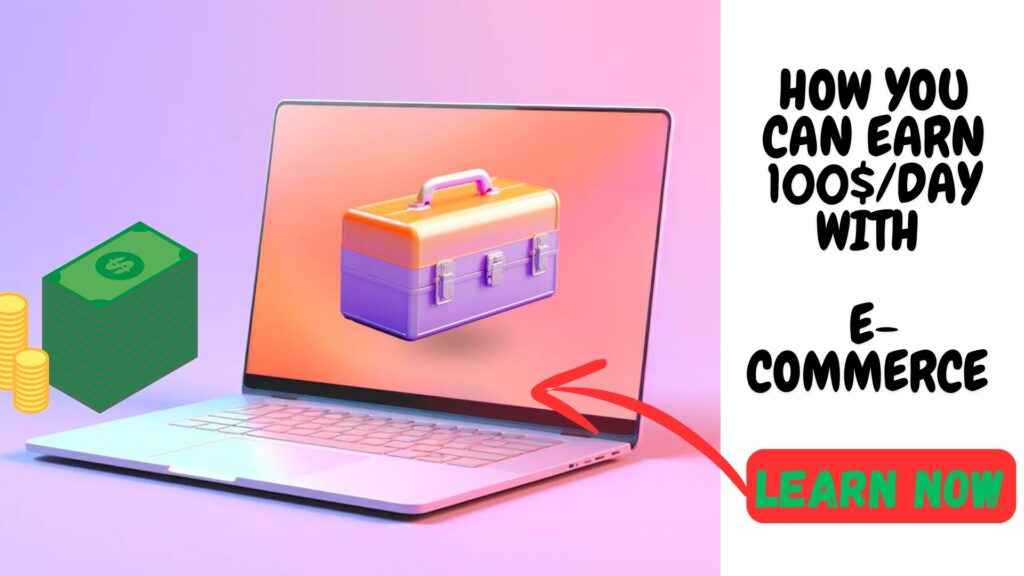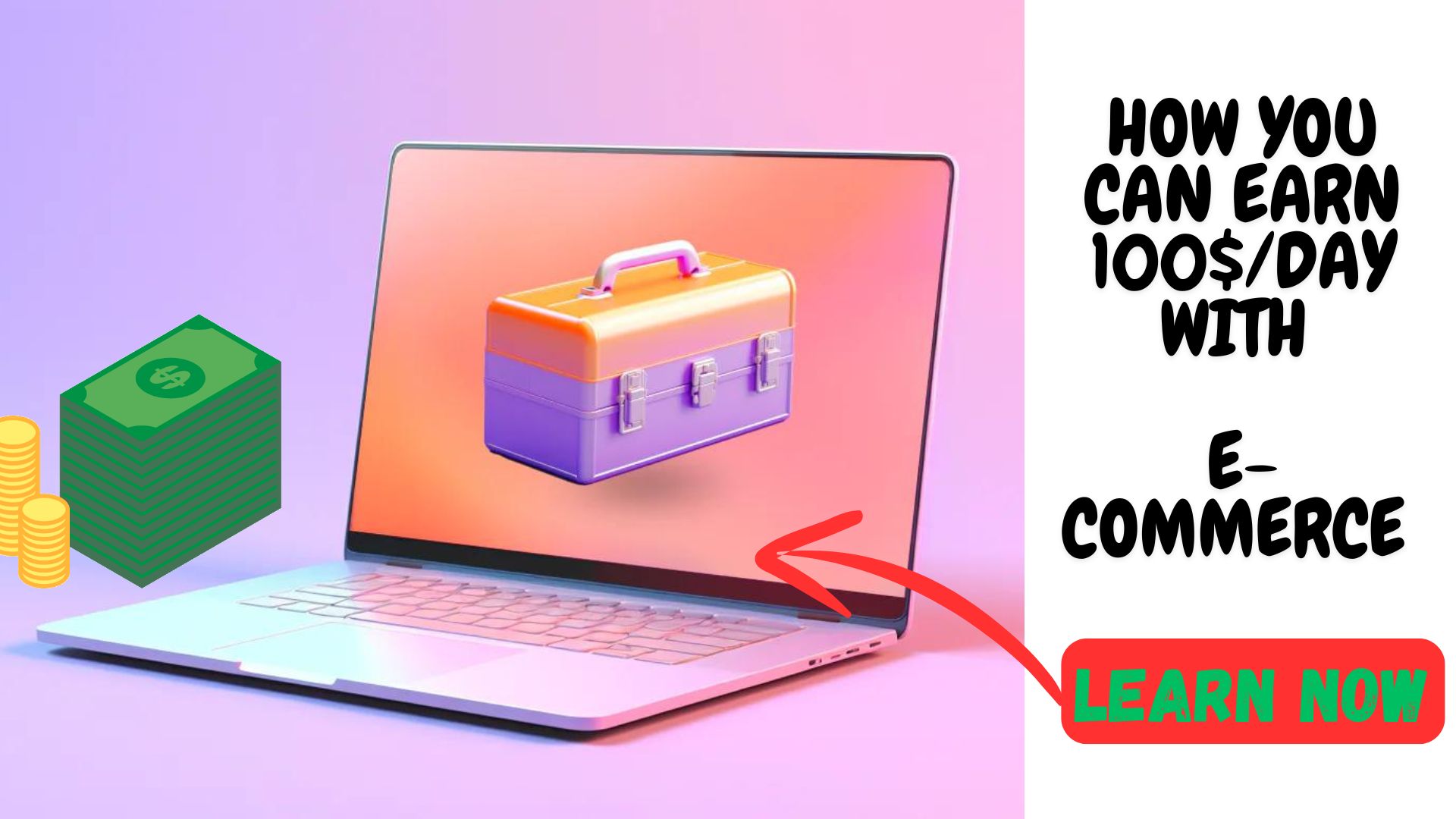E-commerce has become a lucrative opportunity for entrepreneurs looking to earn a steady income online. With the right approach, earning $100 a day through e-commerce is not only possible but also achievable for those willing to put in the effort. This article will provide a streamlined guide on how to get started with e-commerce, covering everything from niche selection to scaling your business. By following these steps, you can build a successful online store and start generating income.

Table of Contents
Understanding E-Commerce
What is E-Commerce?
E-commerce refers to the buying and selling of goods and services over the internet. It includes various business models such as B2B (Business to Business), B2C (Business to Consumer), C2C (Consumer to Consumer), and C2B (Consumer to Business). Each model offers unique opportunities and challenges, but all share the common goal of facilitating online transactions.
E-Commerce Market Trends
The e-commerce market is constantly evolving, driven by technological advancements and changing consumer behaviors. Mobile commerce, AI-driven personalization, and social commerce are among the top trends shaping the future of e-commerce. Understanding these trends can help you stay competitive and capitalize on emerging opportunities.
Choosing the Right Niche
Importance of Niche Selection
Selecting a profitable niche is the foundation of a successful e-commerce business. A well-defined niche allows you to target a specific audience, reducing competition and increasing the likelihood of sales.
How to Identify Profitable Niches
To identify a profitable niche, consider factors such as market demand, competition, and your interests. Tools like Google Trends and Amazon Best Sellers can help you gauge the popularity of various niches. Do
Setting Up Your Online Store
Choosing a Platform
Choosing the right e-commerce platform is crucial for your store’s success. Platforms like Shopify and WooCommerce offer different advantages. Shopify is user-friendly and ideal for beginners, while WooCommerce provides more flexibility for those familiar with WordPress.
Optimizing for User Experience
A positive user experience is essential for converting visitors into customers. Ensure your online store is easy to navigate, mobile-friendly, and features clear product descriptions and high-quality images.
Product Sourcing
Where to Find Products
You can source products through various methods, such as dropshipping, wholesale, or manufacturing your own goods. Dropshipping is popular because it allows you to sell products without holding inventory, while wholesale offers higher margins.
Evaluating Supplier Reliability
Before committing to a supplier, research their reliability by checking reviews, testing product samples, and assessing their communication. Reliable suppliers are crucial for maintaining product quality and timely deliveries.
Pricing Strategy
How to Price Your Products
Setting the right price is a balancing act. Your prices should cover costs, remain competitive, and align with your target market’s expectations. Psychological pricing tactics, like setting prices at $9.99 instead of $10, can also boost sales.
Competitor Price Analysis
Regularly monitor your competitors’ pricing to stay competitive. Tools like Prisync can help automate this process, allowing you to adjust your prices strategically.
Building Traffic to Your Store
SEO Basics for E-Commerce
Search Engine Optimization (SEO) is essential for driving organic traffic to your store. Use relevant keywords in your product titles and descriptions, optimize images, and ensure your site loads quickly to improve your search engine rankings.
Paid Advertising
Paid advertising is an effective way to quickly drive traffic to your store. Platforms like Google Ads and Facebook Ads allow you to target specific audiences based on demographics, interests, and search behavior.
Leveraging Social Media Marketing
Social media platforms like Instagram and Pinterest are powerful tools for driving traffic and building brand awareness. Create engaging content, collaborate with influencers, and interact with your audience to boost your online presence.
Conversion Optimization
Understanding Conversion Rates
Your conversion rate is the percentage of visitors who make a purchase. A higher conversion rate indicates that your store is effectively convincing visitors to buy. To improve conversion rates, focus on optimizing your product pages, simplifying the checkout process, and building trust with customers.
Creating Compelling Product Descriptions
Product descriptions should be clear, concise, and focused on the benefits of the product. Use bullet points to highlight key features, and include keywords naturally to improve SEO.
Using Trust Signals to Boost Sales
Trust signals, such as customer reviews, secure payment badges, and money-back guarantees, can reassure customers and increase sales. Display these prominently on your site to build credibility.
Handling Orders and Fulfillment
Streamlining the Order Process
Efficiency is key when managing orders. Automate the order process as much as possible using tools like ShipStation to handle shipments and track orders. This ensures timely deliveries and a smooth customer experience.
Shipping Strategies and Costs
Offering multiple shipping options can cater to different customer needs. Consider offering free shipping on orders over a certain amount to encourage larger purchases and improve customer satisfaction.
Customer Service and Retention
Importance of Customer Service
Excellent customer service is essential for building customer loyalty and maintaining a positive reputation. Respond promptly to customer inquiries, and handle issues professionally to foster trust and repeat business.
Building Customer Loyalty
Loyal customers are the backbone of a successful e-commerce business. Implement loyalty programs, offer personalized discounts, and send follow-up emails to keep customers engaged and coming back.
Analyzing and Optimizing Performance
Key Metrics to Track
To ensure your e-commerce business is on the right track, monitor key performance metrics such as conversion rate, average order value, and customer lifetime value. These metrics provide valuable insights into your store’s performance and highlight areas for improvement.
Continuous Improvement Strategies
E-commerce is an ongoing process of learning and improvement. Regularly review your analytics, test new strategies, and refine your approach based on what works best for your audience. Continuous improvement will help you stay competitive and grow your business.
Scaling Your E-Commerce Business
When to Scale
You should consider scaling your business when you have consistent sales and a solid customer base. Scaling might involve expanding your product line, entering new markets, or increasing your marketing efforts.
Strategies for Scaling
To scale successfully, focus on automating processes, optimizing supply chains, and exploring new sales channels. Invest in marketing strategies that have proven successful and consider hiring additional staff to manage increased demand.
Conclusion
Earning $100 a day through e-commerce is within reach if you approach it with the right strategy and mindset. By choosing a profitable niche, setting up a user-friendly store, sourcing quality products, and effectively marketing to your target audience, you can build a successful e-commerce business. Continuous improvement and scaling will allow you to grow your income over time. Start small, stay focused, and be persistent, and you’ll be on your way to achieving your e-commerce goals.



